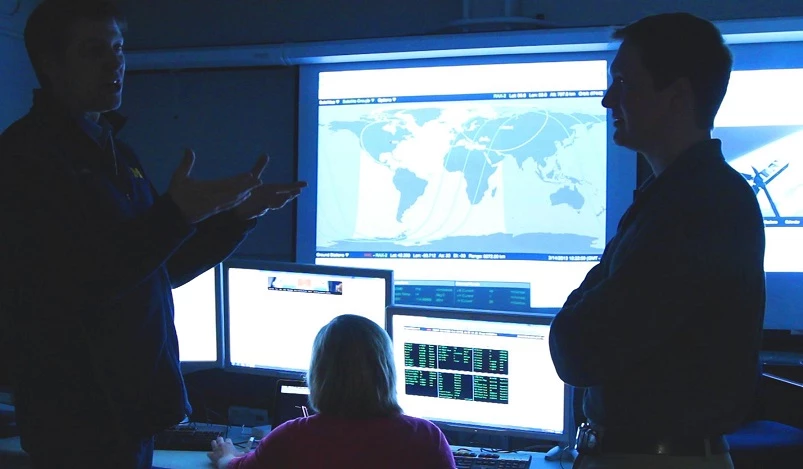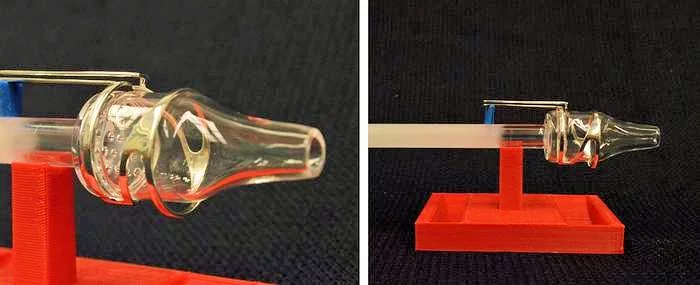CubeSats are one of the wonders of our day. They allow projects with small budgets and smaller equipment to access low Earth orbit (LEO) at achievable costs. Seeing greater potential for these miniaturized modular satellites, Professor Benjamin Longmire of the University of Michigan is heading a team to install a miniature plasma thruster system into a 3U CubeSat, enabling the vehicle to leave LEO and cruise much of the Solar System. Funding for the project is being sought through Kickstarter.
Various forms of ion and plasma thrusters have been under development for many years. The Ad Astra VASIMIR plasma engine, NASA's NEXT ion thruster, and the drives used on Deep Space 1 and Dawn asteroid missions are notable examples, and now ion and plasma thrusters are an accepted part of space propulsion.
Prof. Longmire, who left Ad Astra for the University of Michigan last year, is one of the VASIMIR development team. His group has been working on a very small ion drive which they call the CubeSat Ambipolar Thruster or CAT for short. CAT is a permanent magnet helicon generated plasma thruster, which ejects high velocity ionized gas to provide thrust.

Gas (in this case water vapor) is injected through a fine quartz filter into a quartz chamber that has one open end. Radio frequency power is then coupled into the chamber, which both causes the gas to form a plasma and excites a helicon wave in the plasma, efficiently heating the plasma to temperatures of hundreds of thousands of degrees.
The CAT ionization chamber is arranged with permanent magnets that form a magnetic nozzle that directs the hot plasma away from the chamber, producing thrust. However, the electrons, being much lighter than the ions, attempt to flow from the nozzle before the ions barely get a start. As the electrons move, the electric field between the electrons and ions slow the electrons but speeds up the ions. The electrons and ions are now both moving in the same direction, despite having opposite electric charges, a phenomenon called ambipolar diffusion. In the end, the CAT is capable of achieving specific impulse values between 2,000 and 5,000 seconds, with a thrust of about 0.2 milliNewtons per watt.

The Michigan plan is to build a CAT plasma thruster (weighing about 0.4 kg, or 1 lb) into one of the modules of a 3U CubeSat, which has overall measurements of 10 x 10 x 34 cm (4 x 4 x 13.4 in), about the size of a large loaf of Wonder Bread. The Kickstarter page suggests that up to 2.5 kg of fuel might be carried, but that would require 2.5 liters, which is more than the remaining volume of the 3U spacecraft. A certain amount of room is also required for the CubeSat infrastructure and any scientific package for the mission.
The CAT CubeSat will be solar-powered. The four solar panels will be folded along the sides of the spacecraft, and deployed in orbit. In Earth orbit these will give a total of 20 watts of power, and have been tested in space on the Michigan RAX-2 research CubeSat. The continuous operating power for the CAT thruster is nominally 10 watts, equivalent to about 2 milliNewtons (mN) of thrust. Short bursts of larger thrust can be delivered by storing the solar-electric power for a short period.
So is this a credible interplanetary spacecraft, or is a certain amount of creative imagination in use here? The news is actually rather good on that front. The Michigan estimates are that the CAT can supply a thrust of 2 mN for a period of about a year, given the constraints on fuel capacity. The estimated mass of the CAT CubeSat is initially 5 kg, reducing to about 3 kg when empty of fuel. This should be sufficient not only to escape Earth's gravity, but also to allow the spacecraft to orbit any planet in the Solar System. The orbit would be an extreme capture orbit rather than a low circular orbit, but still rather impressive for a CubeSat.

It's conceivable this inexpensive approach toward space flight system development and nano-scientific missions will be used by more groups in the future. A 3U CubeSat kit costs about $8,500, and launches are nominally free if your mission fits within the parameters of the NASA CubeSat launch initiative.
Source: University of Michigan and Kickstarter












